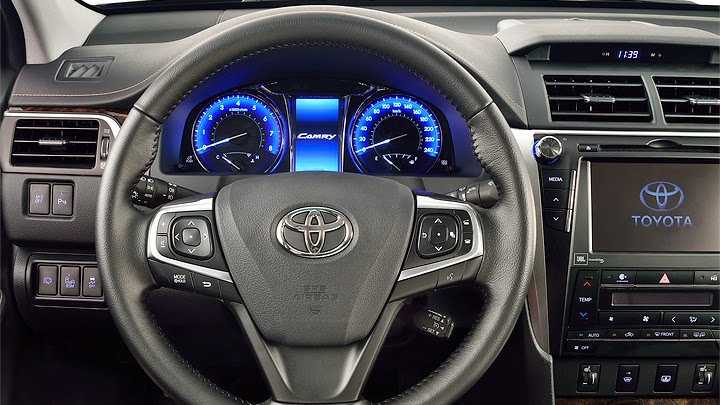
Those who know a little more about the automotive world must be remembering some cases of that. Since North-Americans prefer bigger cars, there are several pick-up trucks, SUVs and minivans which were created for them and sold only there. Europeans, in turn, stick to station wagons more than any other group. Brazilians have other types of preferences, like bi-fuel engines or light off-road vehicles, and it goes on and on. The final result is that any automaker that wants to prosper in multiple countries needs to have these tastes in mind. Toyota follows this strategy not only by offering different vehicles depending on the country as also by adopting different styles for each one. The most recent examples of the latter are Corolla and Camry.
North-Americans’ historic and cultural context leads them to view cars like these as an everyday article, while in other markets they can even be considered luxury items. This vision is enhanced by their laws, in a way, because they are labeled there under lower categories than those which they occupy in other markets: Camry is a medium sedan in the U.S., while Corolla is sold there as a compact car. Therefore, Toyota’s only choice was to accept it. Since a few years ago, these sedans have become sportier only there, so as to make their image more casual and please more young customers. As a result, their latest iterations have arrived there with exclusive designs, while their respective levels of finesse remained untouched elsewhere.










This converges into the fact that you will only see that ‘2015 Camry in the United States. This article’s one is the global model, which debuted in Russia. Its changes have similar extent, but the goal here was to look more casual and modern. Keeping a two-element grille made the front fascia look better, although the huge chrome bar seen at this vehicle is somewhat weird. Besides, this Camry’s fog lights went so much towards the center that Toyota even spared room for another pair of air vents. The sides did not receive that piano-black extension of the rear windows, although it would actually fit better here. And the rear preserved both the big lights and the chrome bar, which results in a more imponent look.
Opening the doors will not surprise you very much: there are bigger screens for both infotainment system (up to 7”)and gauge cluster, while the standard equipment list was increased with heated rear seats (Russians will be very thankful for that in a couple of months) and wireless phone charger. Everything else remained unchanged, including dimensions and the coating’s options for the two-tone leather and the other inserts. The global Camry will have a 2.0L engine for the first time, good for 150 hp. The other options are a 2.5L unit, also with four cylinders but capable of 181 hp, and a 3.5L V6 which reaches 249 cv. The latter is the only one to receive a six-speed automatic transmission. This Camry is produced in Russia.
Lançamento no Brasil (29/12/2014)
Embora a categoria dos sedãs médios venha ganhando cada vez mais força no Brasil, a Toyota ainda não conseguiu emplacar o seu modelo. Para tentar mudar isso, ela trouxe o Camry re-estilizado com apenas três meses de atraso em relação ao lançamento mundial. Assim como o anterior, trata-se da versão global do modelo, que é produzida na Rússia – os Estados Unidos têm uma versão própria. O modelo justifica o preço de R$ 158.600 associando o estilo renovado ao mesmo trem-de-força, composto pelo motor 3.5 V6 (potência de 277 cv e torque de 35,3 kgfm) e pelo câmbio automático de seis marchas, e a um pequeno pacote de equipamentos oferecidos de série que aparecem pela primeira vez.
Por dentro, o novo sedã teve os comandos do ar-condicionado revisados, e ganhou novo grafismo para o quadro de instrumentos, mais comandos no volante multifuncional, airbag para os joelhos do motorista (totalizando sete), e a quase onipresente central de entretenimento, cuja tela de sete polegadas comanda uma série de funções que inclui o leitor de DVD e a câmera de ré. No exterior, as novidades se restringem ao que se exibiu no lançamento mundial: novas luzes dianteiras e traseiras, rodas de liga leve aro 17” redesenhadas, mais detalhes cromados, e parachoques com desenho mais agressivo.